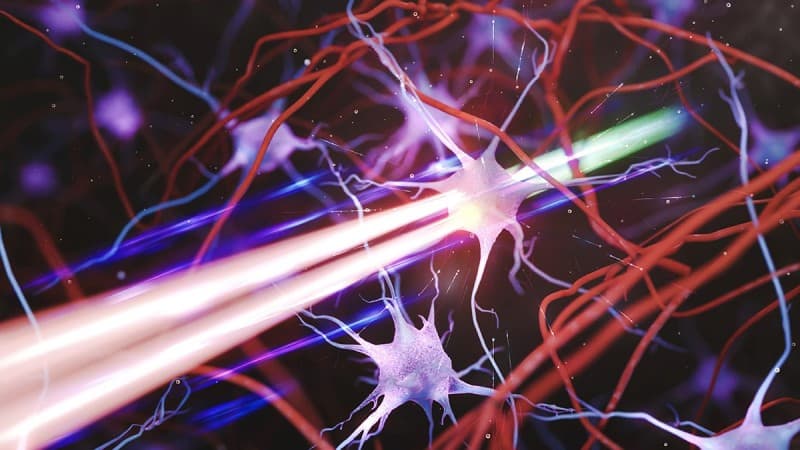Novel microscope technology enhances neural circuit visualisation at unprecedented scale
A new imaging system developed at Cornell University enables simultaneous visualisation of large-scale neural networks at single-cell resolution, combining deep tissue penetration with expansive field of view capabilities.
The DEEPscope microscope system represents a significant technical advancement in the field of neural imaging, addressing longstanding limitations in multiphoton microscopy. By integrating both two-photon and three-photon microscopy techniques, the system overcomes traditional constraints that have historically forced researchers to choose between imaging depth and field of view when studying neural circuits.
The system’s development, reported in the journal eLight in 2024, introduces an adaptive excitation system coupled with a multi-focus polygon scanning scheme. This innovative approach facilitates efficient fluorescence generation whilst maintaining an extensive field of view, crucial for comprehensive neural network observation.
Performance metrics
DEEPscope achieves imaging across a 3.23 x 3.23-mm² field whilst maintaining sufficient imaging speed to capture neuronal activity in the deepest cortical layers of mouse brains. This capability marks a notable improvement over existing multiphoton microscopy systems, which typically suffer from an exponentially diminishing field of view when attempting to image at greater depths.
The system’s dual-modality approach, incorporating both two-photon and three-photon imaging capabilities, enables researchers to simultaneously examine shallow and deep brain regions. This versatility proves particularly valuable when studying complex neural circuits that span multiple cortical layers.
Experimental validation
In validation studies, the research team demonstrated the system’s ability to record neural activity across entire cortical columns and subcortical structures at single-cell resolution. The experiments, conducted using transgenic mice, successfully captured activity from more than 4,500 neurons across various cortical depths.
Perhaps most notably, the team achieved whole-brain imaging of adult zebrafish, successfully visualising structural details at depths exceeding 1 mm across a field wider than 3 mm – an unprecedented achievement in neuroscience imaging.
Lead author Aaron Mok emphasised the significance of these capabilities: “For the first time, we can visualize complex neural circuits in living animals at such a large scale and depth, providing insights into brain function and potentially opening new avenues for neurological research.”
Clinical implications
The technological approach employed in DEEPscope holds particular relevance for clinical research, as the techniques can be integrated into existing multiphoton microscopy systems. This adaptability suggests potential widespread adoption across neuroscience research facilities and other disciplines requiring deep-tissue imaging capabilities.
By enabling simultaneous observation of extensive neural networks at single-cell resolution, the system may facilitate improved understanding of both normal brain function and pathological conditions. The ability to visualise large-scale neural activity patterns whilst maintaining cellular detail could prove particularly valuable in studying neurodegenerative conditions and complex neurological disorders.
Future applications
The system’s capacity for deep and wide-field imaging at high resolution establishes new possibilities for studying neural circuit function in living tissues. This advancement may prove particularly valuable in research examining the relationship between cellular-level neural activity and broader network behaviour—a crucial area for understanding both normal brain function and pathological conditions.
The integration of these imaging capabilities into existing microscopy systems suggests potential applications beyond neuroscience, particularly in fields requiring detailed visualisation of deep tissue structures whilst maintaining broad contextual information.
As research continues, the enhanced imaging capabilities provided by DEEPscope may contribute to improved understanding of neural circuit function in both health and disease states, potentially informing future therapeutic approaches for neurological conditions.
Reference
Mok, A. T., Wang, T., Zhao, S., et al. (2024). A large field-of-view, single-cell-resolution two- and three-photon microscope for deep and wide imaging. eLight, 4, 20. https://doi.org/10.1186/s43593-024-00076-4


